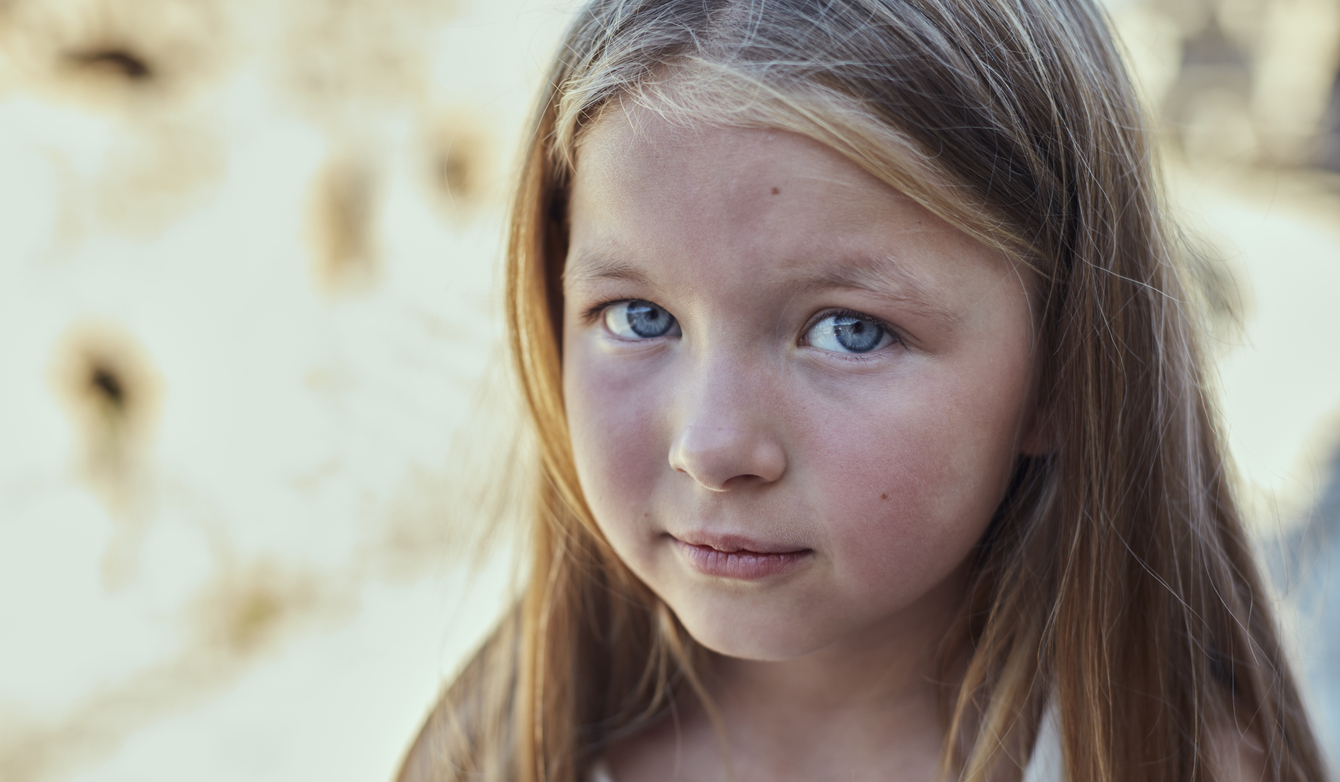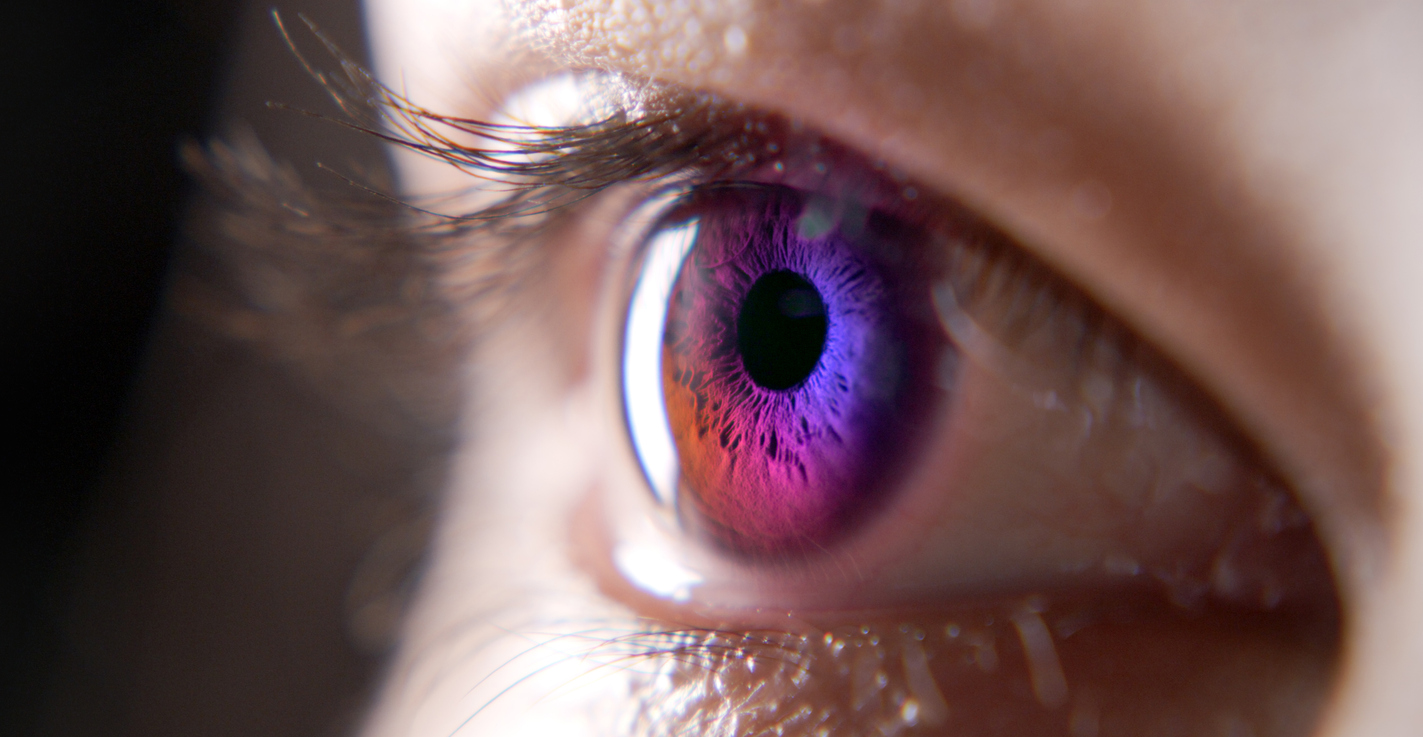Will My Baby’s Eyes Change Color? A Genetic Explanation

Will your baby’s blue eyes stay that way? It’s possible, but not guaranteed.
Babies born with light-colored eyes may end up with a different eye color later on. This is because of the pigmentation process, which continues to develop after a baby is born.
Caucasian babies are generally born with blue eyes, but much of the time, their eyes darken to green, hazel, or brown by age one. Some babies won’t settle into a final eye color until closer to age two.
Eye color genes are more complicated than what appears to the eye. According to Genetics Home Reference, “The inheritance of eye color is more complex than originally suspected because multiple genes are involved.
Related: What Color Will My Baby’s Eyes Be?
While a child’s eye color can often be predicted by the eye colors of his or her parents and other relatives, genetic variations sometimes produce unexpected results.”
What Is Eye Color?
The outer layer of the eye includes the white of the eye, or the sclera, and the cornea, a clear dome at the front of the eye. You can see through the cornea to the iris and the pupil.
The iris is the colored part of the eye. It is a ring around the black pupil, a hole at the eye’s center, and is made up of many small muscle fibers, which you can see if you take a close look.
The iris exists to regulate the amount of light that enters the eye, and the muscle fibers are what allow it to do this, by changing its size. The iris enlarges when the surrounding area is very bright, to reduce pupil size and protect the eye by preventing too much light from entering.
The opposite happens in dim light. The iris decreases in size and opens up the pupil so more light can enter the eye for improved vision. Your emotional state can also influence the iris, it decreases in size to make the pupil larger when you are surprised, or if you are concentrating on a difficult task.
Pigmentation
The so-called “paint” that colors all living things is called pigment. The irises of our eyes contain back and front layers that are colored by the pigment melanin, which appears in shades of brown and determines the color of the eye.
Higher concentrations of melanin on the front layer (called the stroma) result in dark brown to black irises, while lower concentrations result in light blue irises. Depending upon the exact amount of pigment present, eyes appear in a range of colors. The spectrum begins at blue and progresses through green, hazel, brown, and finally black.
Blue Eyes Aren’t Really Blue

If the color blue has you wondering why the lowest amounts of melanin don’t result in very light brown or tan-colored irises, you are onto something. Lower concentrations of melanin in the skin and hair result in very pale wheat-like coloring, which we call blonde hair and fair skin. So where do blue eyes come from?
The truth is, blue eyes are not really blue at all. There is no blue pigment anywhere in the human body. Blue eyes only appear blue because of an optical illusion caused by light scattering.
When light hits the multitude of fibers within the iris, it is either absorbed or scattered. When eyes have lots of melanin in them, most of the light is absorbed and the brown wavelengths reflect back. But when eyes have little melanin, the light scatters and only the longest wavelengths reflect back.
Those wavelengths are blue, so that is how we perceive these irises. The same phenomenon leads us to perceive the daytime sky as blue when its actual color is black.
Green or hazel eyes are caused by the layers of the iris containing small amounts of melanin. This interacts with the blue light, giving the eye its color.
Here’s a fun fact for you. Did you know that everyone technically has brown eyes? This is because even eyes that are the lightest blue tend to have melanin on the back layer of the iris.
What Color Eyes Are the Rarest?

Let’s start with the most common. According to a survey carried out in 2014 of 2000 Americans by the American Academy of Ophthalmology, around 45% of the population have brown eyes, and 27% have blue. Others, including hazel (18%) and green eyes (9%) are less common.
Rarer still is the remaining 1% that have a different color. These include ultra-rare amber, grey and violet eyes!
Amber eyes are caused by having higher levels of a type of melanin called lipochrome, which carries a golden tint. People with grey eyes have low levels of melanin in the stroma, just like light blue eyes, but a higher than normal amount of collagen makes these eyes appear grey.
The rarest of all –violet eyes, can be caused by a condition called albinism where a person produces no melanin. The violet color is caused by light reflecting off the blood vessels in the back of the eye. However, if you notice a person’s eye color as being very unusual, remember, it could be due to colored contact lenses!
Can Eye Color Change Over Time?
Pigmentation is a process that continues during childhood. More melanin is produced over time, causing a baby's eyes to darken. Babies born with brown eyes may end up with slightly darker eyes but it is not usually noticeable. When babies with blue eyes see increased pigmentation, it causes an obvious color change.
If your blue-eyed newborn is destined for another hue, you will notice the irises gradually turning darker. Eyes usually reach their final shade somewhere around six months of age but it could take up to a year or even longer to happen.
change in eye color can also take place in adults as they age, although these are rare cases. People with lighter eye colors might see them lighten further as melanin degrades, resulting in less color.
Irises also might get darker due to sun exposure, which results in higher melanin production in the iris.
There are also some medical conditions (Rauch, 2021)that can cause a change in the color of your eyes as an adult. Rare conditions such as Horner’s syndrome may cause eye color to lighten. Pigmentary glaucoma and Fuch’s heterochromatic uveitis (an eye disease that causes inflammation) may also result in a color change.
A cataract is a clouding of the lens inside the eye, which leads to vision loss and can make the iris look grey or milky. Any change in eye color as an adult should be checked by an ophthalmologist.
A condition called heterochromia causes a person to have two different shades of irises or multiple colors in a single iris.
Some people are born with heterochromia, but others acquire it as an adult from eye surgery or an injury. It can also be a sign of something more serious, like glaucoma or growths caused by an eye tumor.
On some occasions, it might seem like your eyes have changed color when in reality they haven’t. This includes the color of clothing you are wearing, or pupil changes (a large pupil can make your eyes look darker).
How Is Eye Color Determined?
The amount of melanin that your child will have in their irises is determined by the genes they inherit. It was once thought that brown and blue eyes were two separate alleles, with brown being the dominant trait.
Since we inherit one allele for each physical trait from each parent, the combination we end up with would then determine our eye color.
As you may have learned in high school biology, it was thought that you could inherit two brown-eye alleles and display brown eyes, two blue-eyed alleles and display blue eyes, or one of each and display brown eyes, since brown is the dominant trait.
We now know that the genetics of eye color is a lot more complicated than that. There is a wide spectrum of eye colors based on how much melanin we produce and where it is distributed in the eyes.
Research has identified around 16 genes that can influence the color of your eyes, with two on a single chromosome seeming to have the most effect (White & Rabago-Smith, 2011). This also explains the occurrence of green and hazel eye colors, which didn’t fall easily into place in the former scientific thoughts on eye color.
It is for this reason that predicting the color of your child’s eyes is not easy; you can’t assume that a child will have the same color eyes as their parents. That being said, if both parents are blue-eyed, you can be fairly certain that your child will have blue eyes that stick around.
If both parents have brown eyes and one or both parents are not of Caucasian descent, but rather of Asian, African, or Hispanic background, you can expect a brown-eyed baby from the get-go. If both parents are of Caucasian descent, and at least one has brown eyes, you will have to watch and see!

